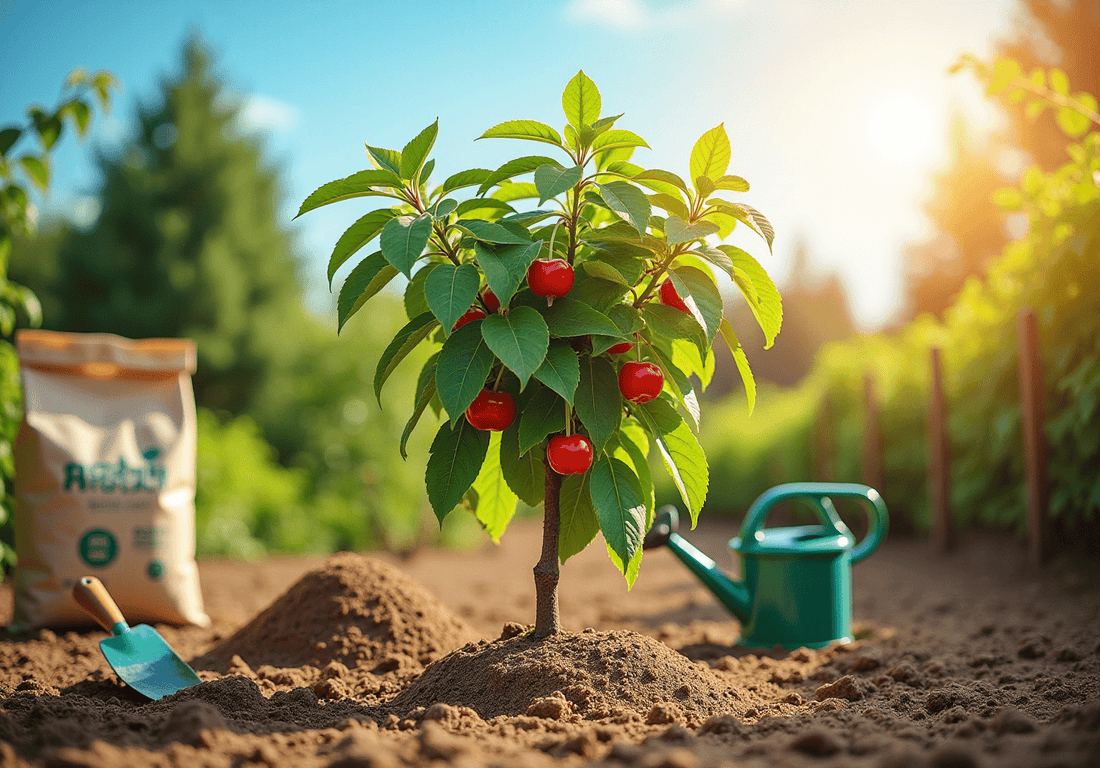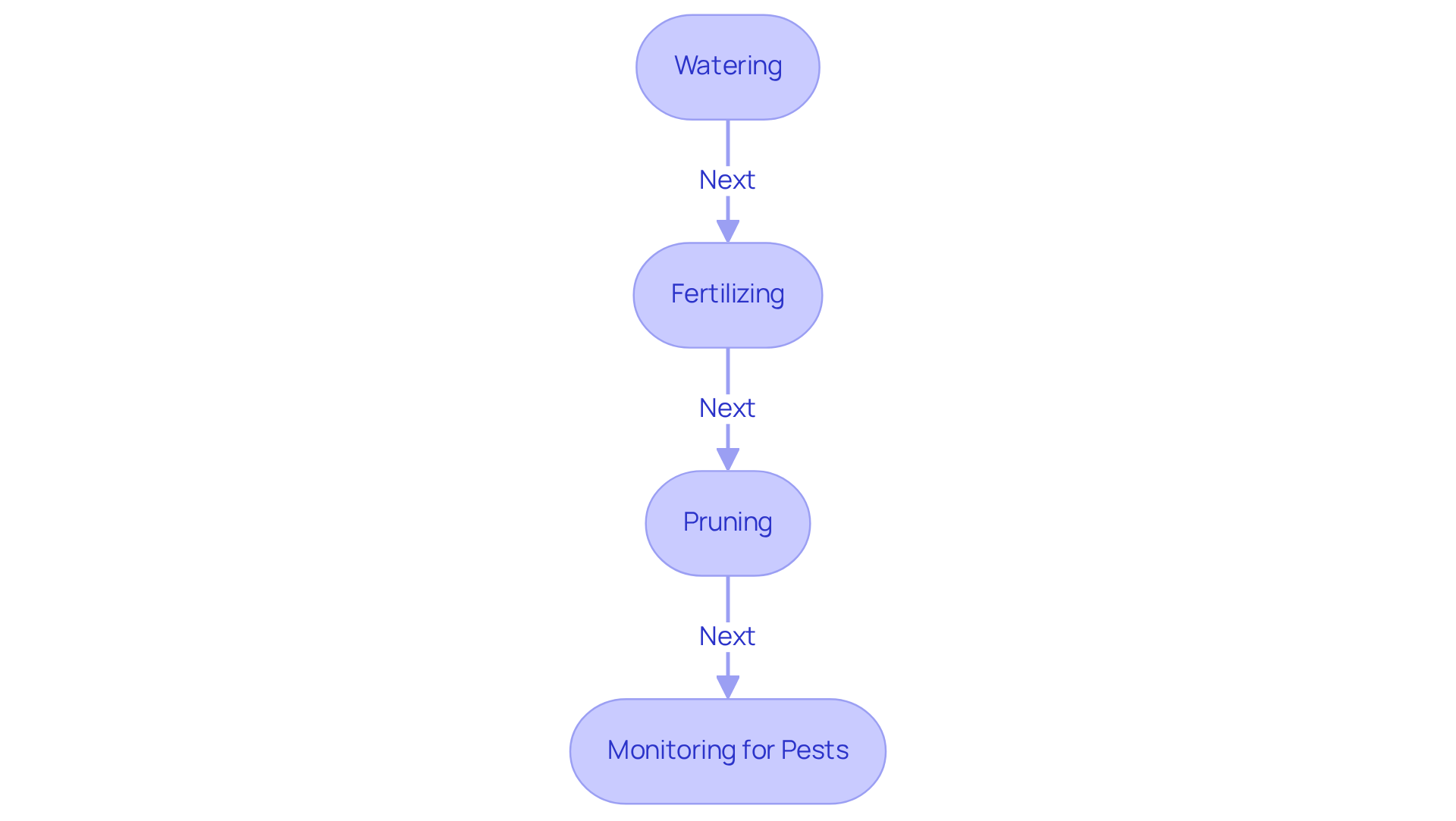
Master Pitomba: Step-by-Step Planting and Care Guide
Share
The Pitomba tree, a tropical gem from Brazil, is increasingly popular among home gardeners due to its delightful, cherry-like fruit and rapid growth. This guide provides a comprehensive, step-by-step approach to successfully planting and caring for this unique species, ensuring that gardeners can enjoy its sweet rewards in just a few years. However, challenges such as pest management and weather fluctuations may arise. Thus, how can one ensure a thriving Pitomba plant in their garden?
Want to grow a Pitomba Tree in your garden?
Explore Pitomba trees for sale at Everglades Farm - shipped directly from Florida.

1. Understand Pitomba: Characteristics and Growing Conditions
The Pitomba plant, scientifically known as Eugenia luschnathiana, is a small to medium-sized tropical fruit plant native to Brazil, celebrated for its aromatic, cherry-like fruit. As part of Everglades Farm's Fast-Growing Trees collection, the pitomba provides home gardeners an excellent choice for quick-yield tropical greenery. Thriving in USDA zones 9-11, it prefers well-drained, sandy soil with a slightly acidic pH. For optimal growth, the pitomba requires full sun exposure, ideally receiving 80-100% sunlight. Although it is moderately drought-tolerant, regular watering is beneficial, especially during dry spells. Mature plants can endure temperatures as low as 25°F, making them suitable for various climates, provided they are protected from frost during colder months.
The anticipated lifespan of the Pitomba plant is between 30 and 40 years, and it can start yielding produce 3 to 4 years after planting, achieving full maturity in approximately 7 to 10 years. The fruit possesses a sweet, juicy, and slightly tart flavor, often likened to a blend of passionfruit and apricot, with the fruiting season typically occurring from May to July. Furthermore, the versatility of the Pitomba allows it to be cultivated as a container specimen, hedge, or as a standalone example, making it suitable for various gardening setups. Understanding these expanding conditions is essential for , making it a valuable addition to your garden from Everglades Farm's Fast-Growing Trees collection.

2. Plant Pitomba: Step-by-Step Planting Instructions
- Choose the Right Location: Selecting a spot that receives full sun for at least 6 to 8 hours daily is crucial for optimal growth and yield. Ensure the area has well-drained ground to prevent root rot, which can be detrimental to the tree's health. For soursop and passion, a sunny location is especially vital, as these types flourish in warm environments.
- Prepare the Soil: Prior to planting, amend the soil with organic matter such as compost to enhance drainage and nutrient content. Aim for a slightly acidic pH between 6.0 and 7.5, as this range is ideal for most tropical fruit plants, including the pitomba. Incorporating well-rotted manure can also supply essential nutrients for the young plants.
- Excavate the Pit: Create a pit that is twice as wide as the ball of the tree but not deeper than the ball itself. This allows for adequate growth of the root system and promotes healthy development. Ensure the hole is deep enough to hold the plants without bending them, which can hinder growth.
- Plant the Sapling: Gently extract the sapling from its container, taking care not to harm the roots. Position the tree in the center of the hole, ensuring that the top of the ball is level with the surrounding earth to encourage stability. For optimal growth, consider planting during the rainy season to assist in establishing the plants.
- Backfill the Hole: Fill the hole with the amended earth, pressing down lightly to eliminate air pockets. Water the area thoroughly to help settle the soil and ensure good contact with the plants. This step is crucial for preventing air pockets that can dry out the roots.
- Mulch: Apply a layer of mulch around the base of the plant to retain moisture and suppress weeds. A recommended thickness is 4 to 6 inches, keeping the mulch a few inches away from the trunk to prevent moisture buildup that could lead to rot. Organic mulches, like straw or wood chips, can also enhance soil quality as they break down.
- Watering: Water the newly planted sapling regularly, allowing the . For the initial six months, provide 2 to 5 gallons of water twice a week to assist in establishing strong roots, gradually increasing to 5 to 10 gallons once a week as the plant matures. Regular watering is particularly vital for soursop and passion plants to ensure they thrive in their new surroundings.
- Pest Control: Consistently observe the plants for signs of pests such as aphids, spider mites, and fruit flies. Implement integrated pest management strategies, including introducing beneficial insects and using insecticidal soap or neem oil as needed to protect the plants from infestations.

3. Care for Pitomba: Watering, Fertilizing, and Pruning Techniques
- Watering: The Pitomba plant thrives with , especially in its first year. It is advisable to water thoroughly once a week, allowing the ground to dry slightly between irrigations. During prolonged dry spells, increase the frequency of watering to prevent drought stress, which is essential for developing a robust underground system. Additionally, monitoring soil drainage is crucial to avoid waterlogging, as this can lead to root damage.
- Fertilizing: For optimal growth, it is recommended to apply a balanced fertilizer during the growing season, specifically in spring and summer. A slow-release fertilizer should be distributed around the base of the plant, following the manufacturer's dosage recommendations. For example, applying 1 pound of 10-10-10 fertilizer for each inch of trunk diameter can be beneficial. However, caution must be exercised to prevent over-fertilization, which can cause nutrient burn and hinder the plant's growth.
- Pruning: Regular trimming is vital for maintaining the shape and overall health of the Pitomba. Light pruning should be performed in late winter or early spring, just before the new growth begins. This practice not only promotes vigorous growth but also enhances air circulation within the canopy, thereby reducing the risk of disease. Furthermore, it is important to remove any dead or diseased branches to improve the plant's health.
- Monitoring for Pests: Vigilance is essential in pest management. Regularly inspect the plant for common pests such as aphids or spider mites. If any pests are detected, it is important to address the infestation promptly with organic insecticidal soap or neem oil, adhering to the product instructions to ensure effective and safe application. Neglecting pest management can lead to significant harm to the plant.

4. Troubleshoot Common Issues: Pest Management and Weather Challenges
-
Pest Management: The Pitomba plant is susceptible to various common pests, including aphids, spider mites, and fruit flies. Effective management strategies include:
- Aphids: Dislodge them by spraying with a strong jet of water or apply insecticidal soap for control.
- Spider Mites: Increase humidity around the plant and apply neem oil to combat infestations.
- Fruit Flies: Utilize traps or organic insecticides to effectively manage their populations. Additionally, monitor for codling moths; if five are trapped in one week during May, it is time to initiate pest control measures.
-
Weather Challenges: To protect young plants from frost, cover the Pitomba plants with during cold snaps. If temperatures drop below 30°F, consider relocating potted trees indoors or to a more sheltered area.
-
Drought Stress: Signs of wilting or leaf drop indicate drought stress. Increase watering frequency to maintain consistent moisture in the soil, while avoiding waterlogging.
-
Nutrient Deficiencies: Yellowing leaves may indicate nutrient deficiencies. Conduct a ground test to assess nutrient levels and enhance the soil with organic fertilizers as needed. Healthy, well-drained soils with a pH of 6.0-7.0 are essential for improving tree resistance to pests and diseases.
Conclusion
The cultivation of Pitomba, a tropical fruit plant celebrated for its aromatic, cherry-like produce, offers a remarkable opportunity for home gardeners. Its adaptability to various gardening setups and relatively straightforward care requirements enable Pitomba to flourish in suitable conditions, providing both aesthetic appeal and delicious fruit for years to come.
Key aspects of successful Pitomba planting and care involve:
- Selecting an optimal location with ample sunlight
- Preparing the soil to meet its specific pH needs
- Adhering to a structured watering and fertilization schedule
Regular monitoring for pests and implementing effective management strategies are essential for maintaining the plant's health. Additionally, understanding the plant's growth timeline and proactively addressing potential issues, such as frost protection and drought stress, are crucial for maximizing yield and longevity.
By embracing the art of Pitomba cultivation, gardeners not only enhance their landscapes but also contribute to biodiversity and sustainable gardening practices. The journey from planting to harvesting is rewarding, and with the right knowledge and dedication, anyone can reap the benefits of their labor. Following this comprehensive guide ensures that the Pitomba plant becomes a cherished addition to any garden, offering both beauty and bounty for years to come.
Transform Your Garden with the Exotic Pitomba!
Start your gardening journey today and enjoy vibrant fruits and stunning landscapes with Everglades Farm.
Frequently Asked Questions
What is the Pitomba plant and where is it native to?
The Pitomba plant, scientifically known as Eugenia luschnathiana, is a small to medium-sized tropical fruit plant native to Brazil, known for its aromatic, cherry-like fruit.
What are the ideal growing conditions for the Pitomba plant?
The Pitomba thrives in USDA zones 9-11, prefers well-drained, sandy soil with a slightly acidic pH, and requires full sun exposure, ideally receiving 80-100% sunlight.
How tolerant is the Pitomba plant to drought?
The Pitomba is moderately drought-tolerant, but regular watering is beneficial, especially during dry spells.
What temperatures can the mature Pitomba plant endure?
Mature Pitomba plants can endure temperatures as low as 25°F, but they should be protected from frost during colder months.
What is the lifespan of the Pitomba plant?
The anticipated lifespan of the Pitomba plant is between 30 and 40 years.
How long does it take for the Pitomba plant to start yielding fruit?
The Pitomba plant can start yielding fruit 3 to 4 years after planting and achieves full maturity in approximately 7 to 10 years.
What is the flavor profile of the Pitomba fruit?
The Pitomba fruit has a sweet, juicy, and slightly tart flavor, often likened to a blend of passionfruit and apricot.
When is the typical fruiting season for the Pitomba plant?
The fruiting season for the Pitomba plant typically occurs from May to July.
Can the Pitomba plant be grown in different gardening setups?
Yes, the Pitomba can be cultivated as a container specimen, hedge, or as a standalone plant, making it suitable for various gardening setups.

